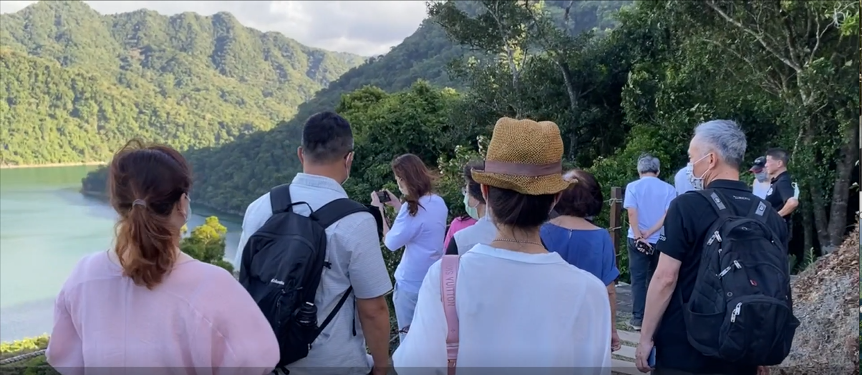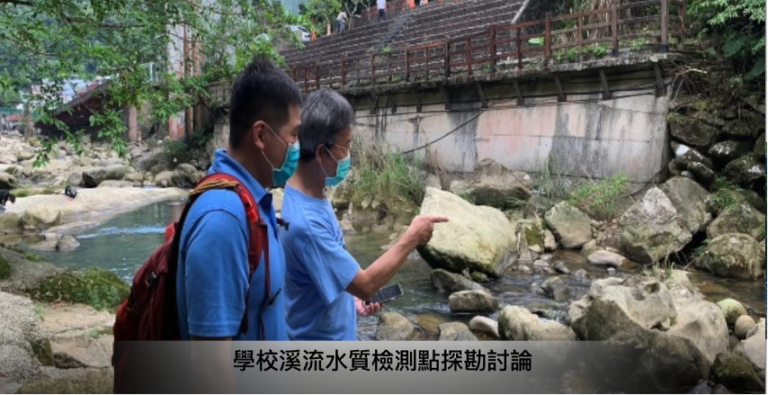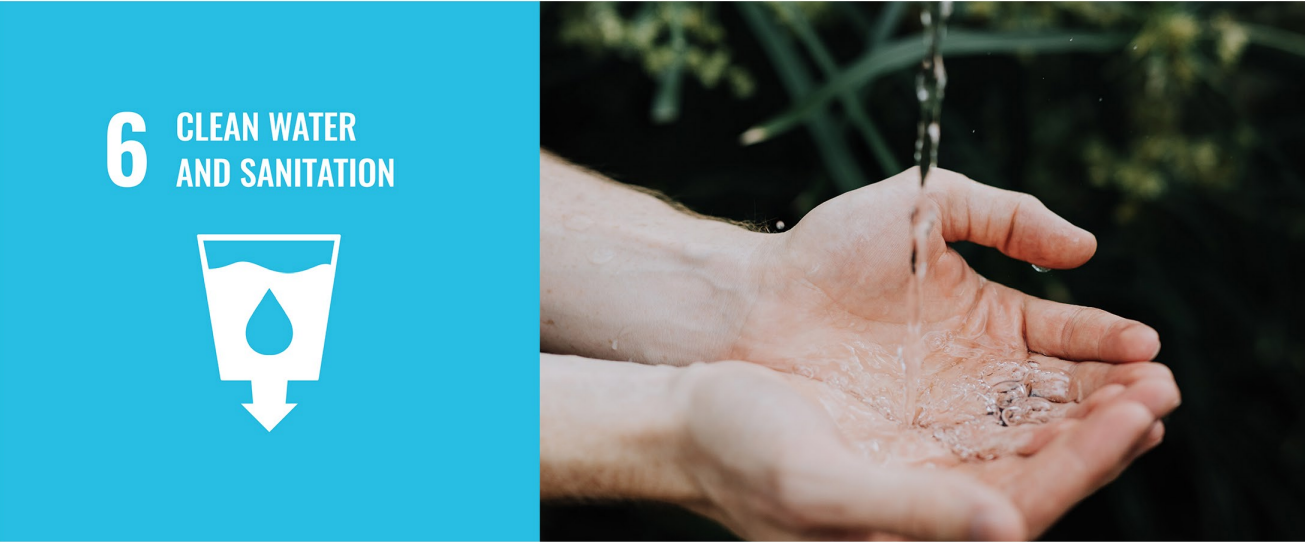
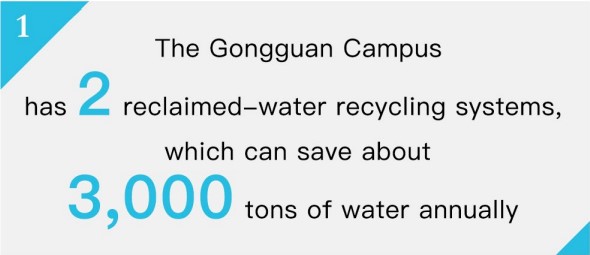
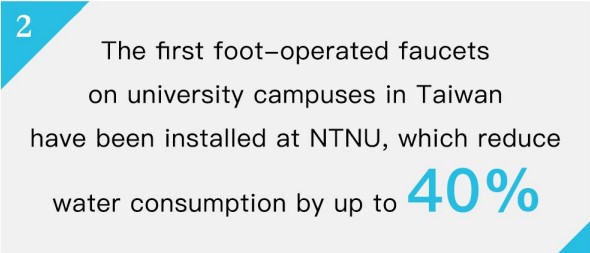
6.1 Spirit of the SDG and the University’s Philosophy
Water is necessary for human survival. Agriculture and aquaculture both rely on water resources, and clean water is critical. Every year, millions of people around the world (including a high proportion of children) die from diseases caused by the lack of clean water or sanitation facilities. Therefore, universities should perform research and allocate resources to ensure that all of mankind has access to clean water and sanitation facilities.
NTNU has signed the Talloires Declaration, clearly indicatingthat the University will stride toward the goal of a green university. In response to SDG 6, the University is committed to multifaceted practices and contributions such as sustainable campus governance, teaching research, and public participation. In terms of overall institutional governance, starting from the University reducing its own water consumption and optimizing campus water management, it also comprehensively promotes water saving among teachers and students. At the community level, the University proactively spreads water-conservation awareness and actions from on campus to off campus, to reach the local community and the general public to provide water-resources management actions and education programs. At the national level, through relevant research projects and academic achievements, the University cooperates with the government on core issues related to water resources and helps shape public policies related to SDG 6. The University also utilizes educational professionalism and a rich network to assist Taiwan in education on water-resources management being provided in schools at all levels. On the international front, through international research cooperation and connections with international organizations, the University participates in and contributes to the promotion of global research related to water resources as well as innovative practices.
6.2 Achievements
Proactively implementing sustainable water consumption on campus and enhancing water-resources management
The University improves the sustainability of water consumption on campus through both smart water conservation and the recycling of reclaimed water. The University uses technology to strengthen water-saving awareness and implementations that have produced positive outcomes. In 2017 it was the first university in Taiwan to install foot-operated faucets on campus, which reduce water consumption by up to 40%. In addition, a digital-water-meter monitoring system was installed in each campus to allow real-time water monitoring and effectively reduce water wastage. The University has also established water reuse systems on different campuses. The Gongguan campus has two reclaimed-water recycling systems, which are estimated to save approximately 3,000 tons of water annually. The Linkou campus constructed a rainwater harvesting system that currently collects 4.5 tons of water in the administrative building, which can be used for plant irrigation. The Information and Teaching Building has a rainwater harvesting system collecting 173 tons of water that can be used for flushing toilets.
Water-resources research and teaching promotes related national policies
NTNU departments such as the Graduate Institute of Environmental Education and the Department of Geography offer courses related to water-resources conservation. The university’s academic work promotes research in fields related to water resources, putting environmental education into practice. In addition, the faculty and research teams from different departments of the University (e.g., the Department of Geography, the Department of Earth Sciences, and the Department of Mechatronic Engineering) cooperate with different ministries of the national government (e.g., the Ministry of Science and Technology, and the Ministry of Transportation and Communications). During 2019 and 2020, 18 projects and research on topics related to water safety were implemented, promoting knowledge in the field of water resources and helping to shape public policies.
Promoting the influence of higher education on sustainable water resources and their implementation
In addition to being a green campus, the University proactively reaches out to the local community and the general public to promote water saving and water-resources conservation. For example, through the e-newspaper published regularly by the Environmental Safety and Hygiene Center and also other free educational resources, the University promotes water saving to the general public, by sharing daily water-saving tips, thereby enhancing the public’s awareness and knowledge of water saving and water-resources conservation. Moreover, to assist the local community in the water shed areas in understanding and solving water-related issues, a team of teachers and students from the Environmental Protection and Occupational Safety and Health Center went deep into the water-resources protection area and worked with people in the local community in promoting the concept of environmental protection in those areas. This also helped to improve the educational disadvantages of the residents and the regional development predicament of the water source areas.
6.3 Featured Highlights
6.3.1 Innovative and smart water saving on campus: the first university to introduce foot-operated faucets, which reduces water usage by up to 40%
The University combines technology with water saving. Since 2017, the University become the first university in Taiwan to install foot-operated faucets on campus. Their water consumption is only 60% of the usual faucet. This is especially useful during the COVID-19 epidemic since foot-operated faucets can save water while also reducing virus transmission. The policy of the University for addressing the epidemic in 2020 included proactively encouraging teachers and students to wash their hands frequently and pay attention to personal hygiene. However, the water consumption during the pandemic in 2020 was just under 10,000 kWh more than during the previous year, which represents a remarkable water-saving effect. This accomplishment also attracted media attention. It is believed that this NTNU policy has promoted water conservation-related discussions and actions in more organizations and all sectors of society, thereby achieving a broader impact.
Related Media Coverage
6.3.2 Education and conservation development plan for residents in water source areas
The University has long been concerned with the conservation and development of water source areas near reservoirs, and has set up a planning team based on its expertise in environmental education to go deep into those areas associated with the Feitsui Reservoir .The University has established a cooperative guidance mechanism with the local community, linking all elementary schools in the Shiding District related to water resources, and connected various local resources to form a “SDGs Education in Water Source Protection Area” project team. In addition to promoting local curriculum development and outdoor teaching, this team promotes the concept of environmental protection and water conservation in water source areas. Furthermore, it educates students about connecting with the development of the community and encourages students to find employment locally in the future. Therefore, the team not only directly promotes the clean-water goal of SDG 6, but also spreads its influence over the poverty-eradication goal of SDG 1 and the high-quality-education goal of SDG 4. While doing so, the team also takes into account the sustainable environment of the local community and its long-term humanistic and industrial development.
Related Media Coverage

